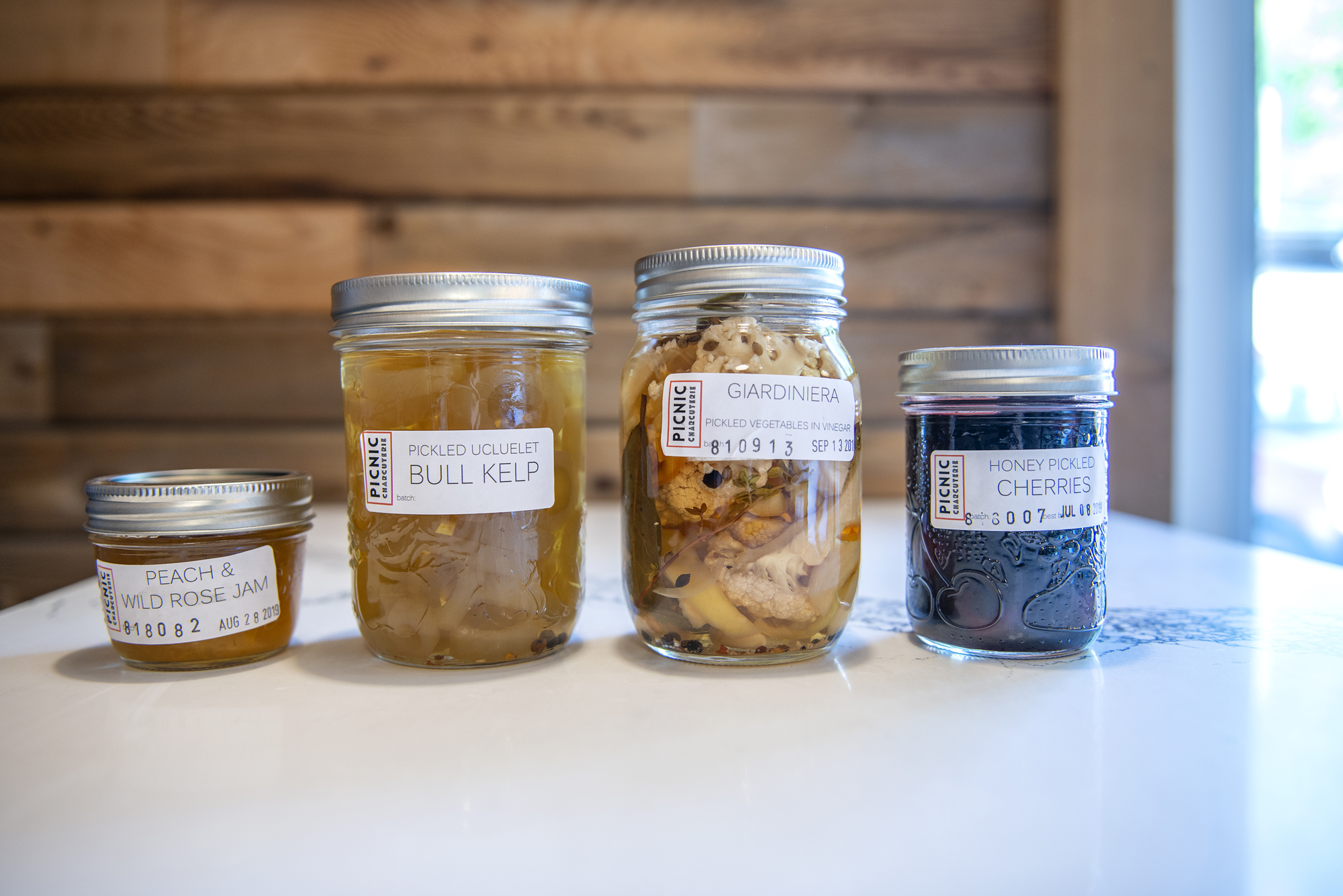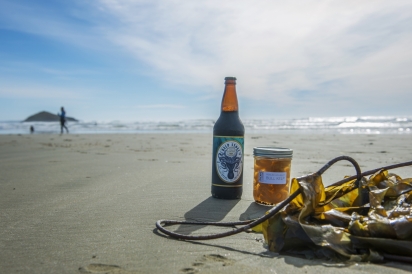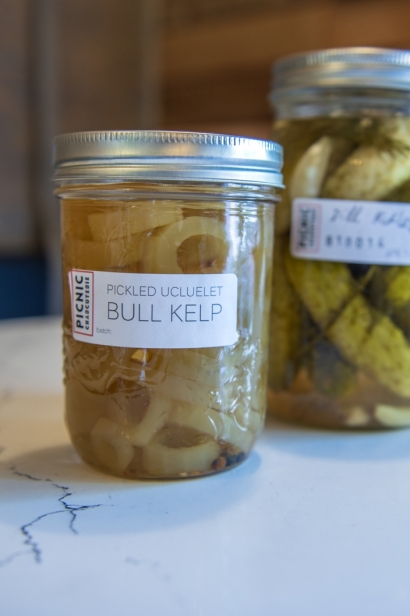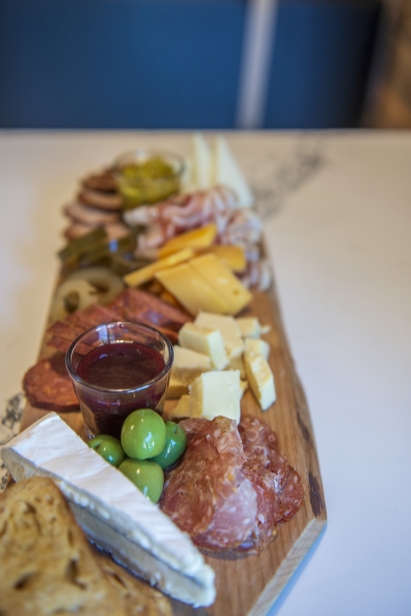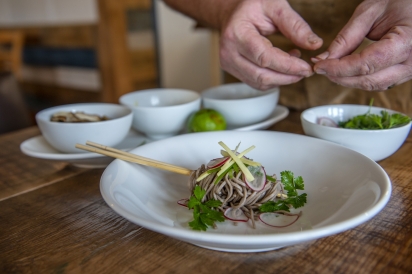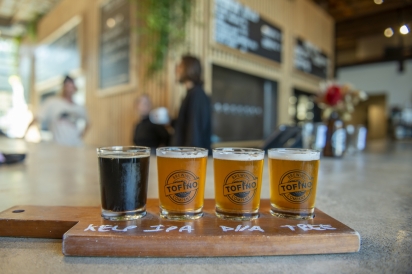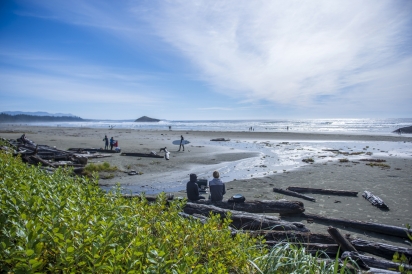Eat Your (Sea) Vegetables
When Amanda Swinimer puts on her suit and heads out the door for work, she’s wearing a wetsuit and flippers, not flats.
The marine biologist-turned-entrepreneur is the CEO (and chief everything) at Sooke-based Dakini Tidal Wilds, foraging in the rich waters off the west side of Vancouver Island for one of our most iconic wild foods – seaweed.
Sea vegetables are among the most nutritious plants on earth and we are literally swimming in the stuff. At low tide, Swinimer finds electric green sea lettuce and dark purple laver clinging to the rocks. There are fronds of frilly brown alaria (a.k.a. wakame), inky nori, forked sacks of rockweed, and clumps of salty sea asparagus at the high water line.
She floats through vast forests of kelp just off shore, hauling the massive plants into her drying sheds to package and sell to chefs, brewers, distillers and natural food stores.
“We have 650 species of seaweed on our coasts,” says Swinimer, “and 32 types of kelp—the most diversity on the planet.”
Seaweed provides a wealth of nutrients, from natural vitamins A, B, C and E to potassium, zinc, iron, iodine, high levels of fibre, and, of course, the elusive fifth flavour, savoury umami.
“They all have very different textures and taste different but they all have the umami,” says Swinimer. “Seaweed is the epitome of that flavour.”
On the Menu
And it’s an ingredient popping up on locally inspired menus.
In Tofino, Wolf in the Fog chef Nick Nutting uses slivered kelp in seaweed, daikon and puffed wild rice salad, and tops his tuna poke plate with deep-fried shards of crispy nori. Over at the Wickaninnish Inn, they use powdered bull kelp to create vinegar for salads and dust the cured sockeye for a stunning Salmon Mosaic. And at Picnic Charcuterie, you’ll find jars of pickled sea asparagus and bull kelp on the shelf—the perfect foil for Tina Windsor’s beautiful artisan salami, duck sausage and Kelp Stout ham.
Down the road in Ucluelet, chef Ian Riddick of Heartwood Kitchen forages bull kelp and pine mushrooms for his Ukee Dashi Broth. And in Sooke, chef Oliver Kienast of Wild Mountain Food tops raw island oysters with electric green powdered sea lettuce and lightly pickled sea asparagus.
“I like things to intersect, for flavours to live together,” says Kienast. “Shellfish with sea vegetables strikes a chord—people kind of get it.”
It’s easy to add seaweed to your diet, whether it’s the sheets of nori for wrapping sushi rolls, a bit of kombu to flavour steamed rice, a dusting of powdered seaweed on buttered popcorn, or a panko and dried seaweed crust for baked salmon.
Just a teaspoon of dried seaweed flakes a day is enough to obtain the medicinal properties that come from its concentrated shot of vitamins, micronutrients and trace minerals. Sprinkle it on your salad, toss it into your miso soup, or just snack on roasted dried seaweed.
You can also drink your seaweed. Sheringham Seaside Gin and Akvavit are flavoured with Dakini’s winged kelp (Alaria marginata), and there’s a briny Kelp Stout from Tofino Brewing (with 10 pounds of dried kelp in each brew). Silkroad Tea offers a minty Mermaid’s Potion.
Find It
Swinimer has been harvesting seaweed near Sooke for nearly 20 years, and sells her dried products, seaweed-based teas and wild-crafted medicinals under her Dakini Tidal Wilds label. You’ll find her hand-harvested and dried winged kelp (wild wakame), sea kelp, laminaria (kombu), powdered seaweed, and Land and Sea Tea (with kelp, citrusy spruce tips and wild mint), available on her website or in local food stores such as Victoria’s Lifestyle Markets or The Community Farm Store in Duncan.
Swinimer offers seaweed workshops, and even hands-on harvesting and snorkeling tours for anyone who wants to know more about sea vegetables.
Her favourite way to eat kelp? Wrap fish in seaweed before cooking to impart both flavour and natural nutrients, she says.
“Soak the dried kelp, wrap the fish and grill or bake it—it’s light and crispy, and the perfect pairing.”


